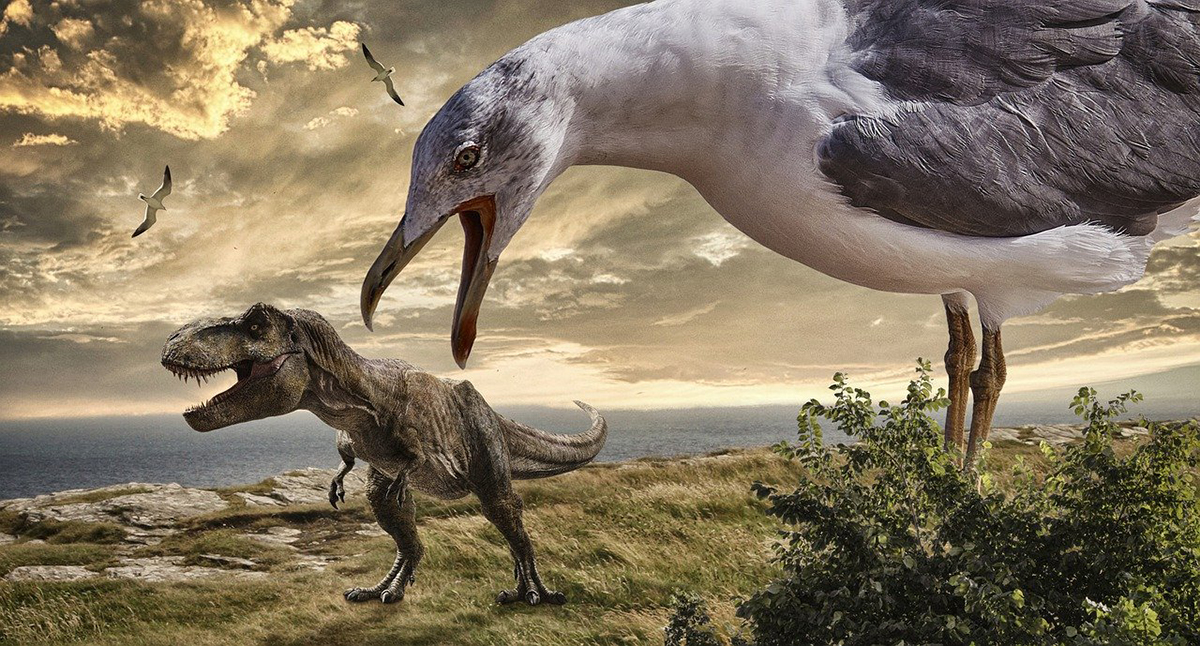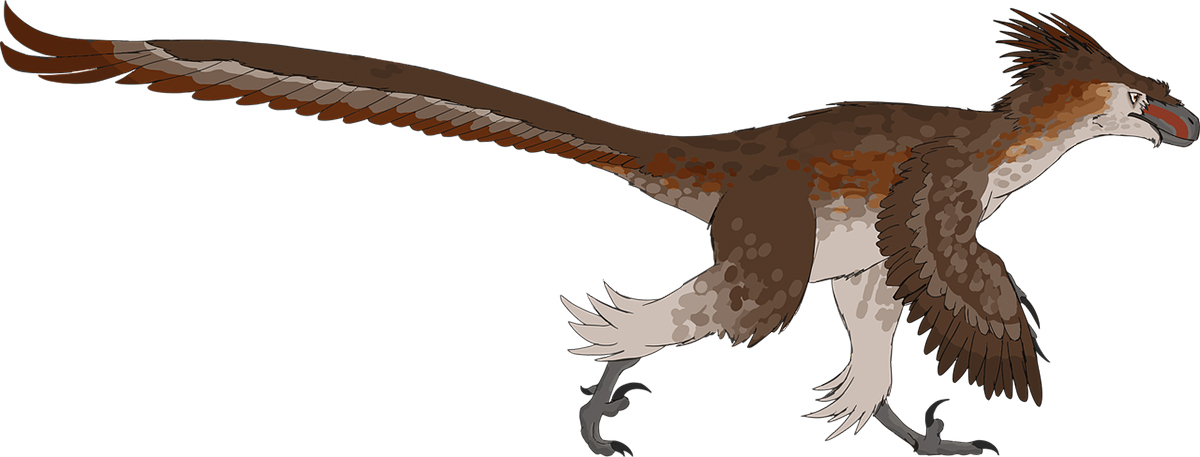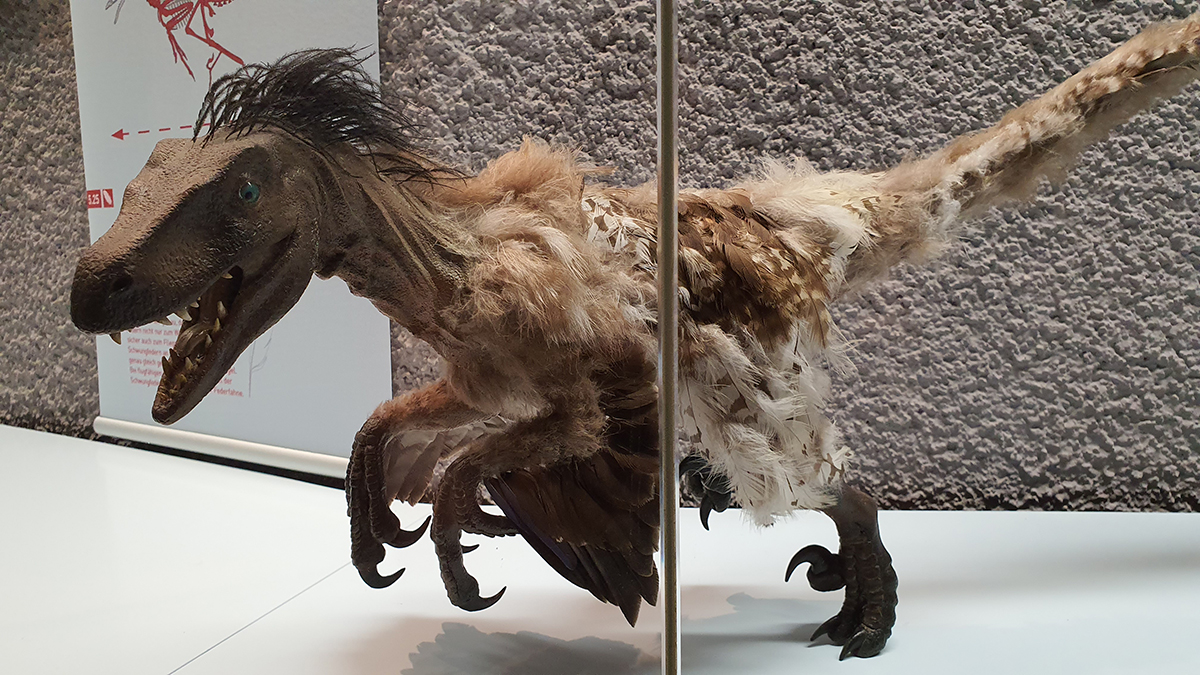
Many know today the theory that dinosaurs evolved into birds. It is referred to in the "Jurassic Park" saga, in documentaries and in museums. Many scientists and paleontologists have tried to find out the evolution of these gigantic extinct reptiles. However, currently everything seems to indicate that this theory is true thanks to the feathered dinosaurs.
Feathered dinosaurs are a transitional form between dinosaurs and modern birds. The theory that birds descended from theropod dinosaurs has been around for many years. Primitive birds, such as Archeopteryx, have much in common with reptiles, such as their claws, fingers, and teeth. In the late 90s, several feathered dinosaurs were discovered in China. These were the conclusive proof for the relationship between dinosaurs and birds. However, the genealogical details remain in a state of resolution.
History of feathered dinosaurs

Today there is much scientific evidence that corroborates the relationship between birds and dinosaurs. Their similarity at the morphological level is very remarkable. The legs, the upper extremities, the skull and the hip are very similar. Modern birds are monophyletic, that is: All species belonging to this group have a common ancestral group. The first animals belonging to the ancestors of birds are from the Jurassic period.
In 2017, paleontologists Norman, Barrett, and Baron published that feathers or similar structures could have originated from the common ancestor of the Ornithoscelida. It is a group of dinosaurs that includes theropods and ornithischians. They are the only two clades with the presence of feathers. The feathers may even have developed in earlier groups. This speculation is due to pycnofibers discovered in pterosaurs. In addition, crocodilians also have a beta-keratin similar to that of modern birds.
Similarities Between Feathered Dinosaurs and Modern Birds

In addition, the position during sleep and the heart are also very similar. In the year 2000, analyzes of the pectoral cavities of some dinosaurs were carried out. Through tomography it has been possible to observe that the hearts had four cavities, very similar to mammals and birds. A fossil of a Troodon that slept in a bird-like posture was recently discovered. He had his head hidden under his arms to keep the cranial heat.
[related url=»https://infoanimales.net/dinosaurs/microraptor/»]
Another similarity found between feathered dinosaurs and birds is the ingestion of stones. It is a digestive method that helps to crush the fibers when they enter the stomach. These stones found in fossils are called gastroliths. Thanks to these stones ingested by dinosaurs, paleontologists have been able to establish the migration routes of these animals. For this, studies of geological formations have had to be carried out.
Fountain Pens

In 1861 the first feathered dinosaur was found: Archeopteryx. This primitive bird is a clear example of a transitional form between dinosaurs and birds and possesses characteristics belonging to reptiles and birds. His discovery took place after Charles Darwin published "On the Origin of Species" and strongly supports his theory of evolution. Archeopteryx physically closely resembles an ordinary dinosaur. So much so that individuals without fossil imprints were confused with Compsognathus specimens.
Since the 90s, numerous feathered dinosaurs have been found. However, many discovered fossils have feathers that do not resemble those of birds, but rather look like a mixture between hair and feathers. In any case, it is speculated that they were very useful to cover themselves from the cold. This type of feather has been called "protofeather". It is considered the forerunner of modern bird feathers.
[related url=»https://infoanimales.net/dinosaurs/arqueopterix/»]
Especially in dromaeosaurids it seems that the plumage cover was very common. Its feathers had a remarkable complexity. Also, within this family is the Microraptor. Many experts think that this dinosaur may have been able to glide.
Reproduction

A Tyrannosaurus rex skeleton was recently discovered, allowing scientists to establish the sex of a dinosaur for the first time. After laying their eggs, modern female birds obtain special bone tissue in their limbs. This bone is known as the "medullary bone." Being rich in calcium, it serves to create the egg shell. This type of bone tissue was found in the marrow of the Tyrannosaurus Rex, thus being able to establish that it was female. Furthermore, it is a clear example that dinosaurs used reproductive strategies very similar to birds.
Skeleton

To date, more than a hundred similar anatomical features have been identified in the skeletons of maniraptor theropods and those of modern birds. Therefore they are accepted as their closest relatives and predecessors. Among these common features are pubis, neck, shoulder blades, wrists, upper extremities, pectoral bones, and cerci. However, the most notable feature is the furcula. It is a bone obtained by the fusion of both clavicles. It is unique in birds and theropods.
All these common features affirm that dinosaurs were the ancestors of birds. For this they went through a long process of physiological and anatomical adaptations. Nevertheless, the process of its flight evolution remains a complex issue. Experts continue to debate whether it was caused by fast runners using flight to change terrain, or by tree-dwelling dinosaurs gliding.
[related url=»https://infoanimales.net/dinosaurs/theropod/»]
In conclusion, it can be said that the general belief among paleontologists is that birds come from dinosaurs. However, some experts, such as the scientist Gregory S. Paul, have proposed another hypothesis from a specific group. An example would be dromaeosaurids. Paul thinks that these dinosaurs could have gone through a reverse evolution, that is: from birds. According to him, it is possible that they lost the ability to fly but nonetheless kept their feathers, just like ostriches.